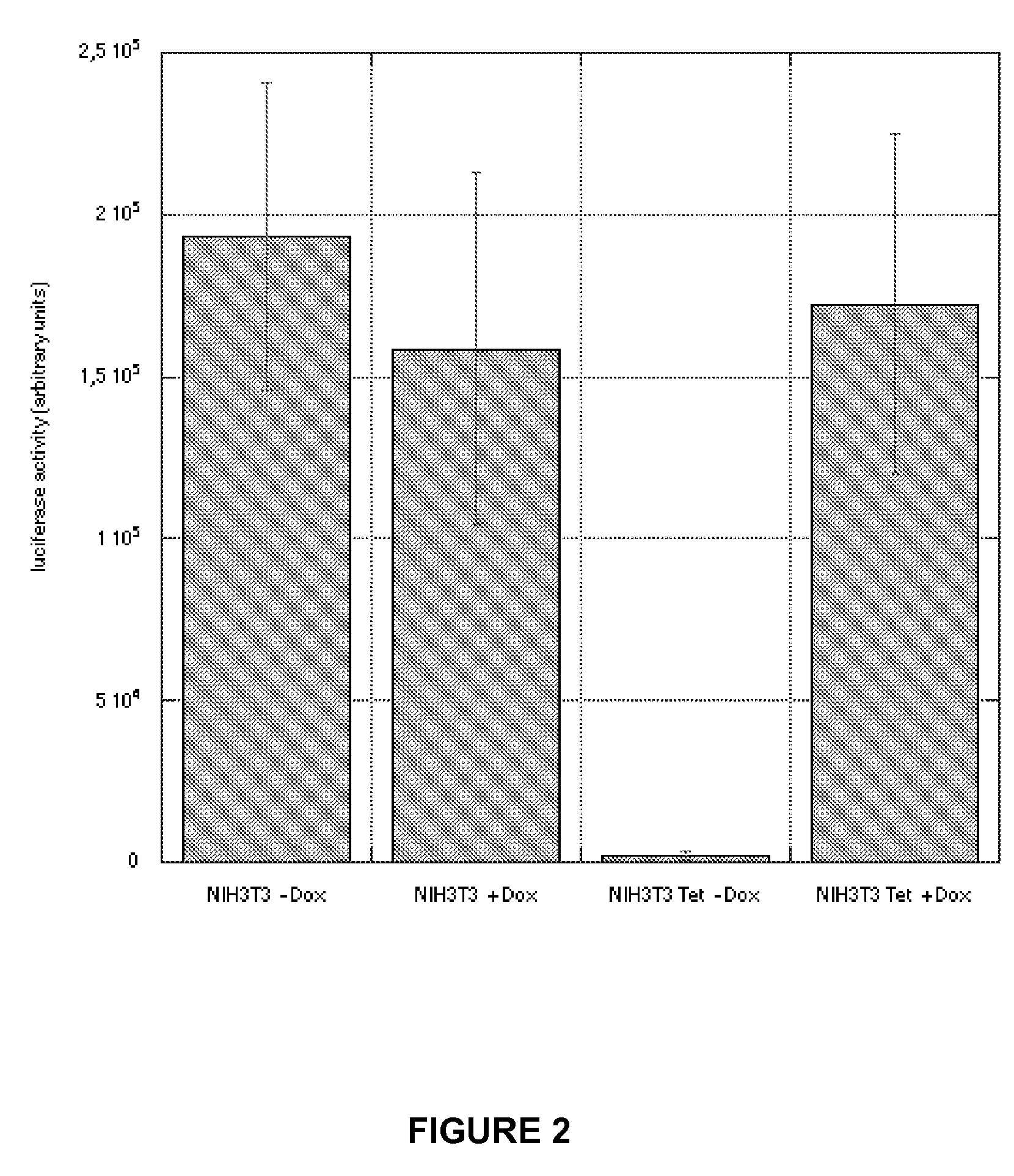Vector for the inducible expression of gene sequences
a gene sequence and inducible technology, applied in the field of vectors for inducible expression of gene sequences, can solve the problems of difficult analysis and interpretation of results, high cost of transfection, and inability to achieve the effect of large-scale biochemical experiments
- Summary
- Abstract
- Description
- Claims
- Application Information
AI Technical Summary
Benefits of technology
Problems solved by technology
Method used
Image
Examples
Embodiment Construction
[0010] The invention is based on use of the tetracyclin repressor to regulate the expression of genes controlled by the tetracyclin operator carried on a second plasmid, as described by (Yao et al., 1998 supra). The inventors have modified the system by driving expression of the tetracydin repressor from the human EF-1α promoter.
[0011] Polypeptide chain elongation factor 1α (EF-1α) is an eukaryotic counterpart of E.coli EF-Tu which promotes the GTP-dependent binding of an aminoacyl-tRNA to ribosomes. EF-1α is one of the most abundant proteins in eukaryotic cells, and expressed in almost all kinds of mammalian cells. The human chromosomal gene coding for EF-1α was isolated in 1990 and its promoter was shown to very efficiently stimulate the in vitro transcription (Uetsuki et al, 1989, J. Biol, Chem, 264:5791-5798; Mizushima, S., and S. Nagata. 1990. Nucleic Acids Res. 18:5322).
[0012] The inventors have now achieved highly inducible expression of target sequences in hematopoietic an...
PUM
 Login to View More
Login to View More Abstract
Description
Claims
Application Information
 Login to View More
Login to View More - R&D
- Intellectual Property
- Life Sciences
- Materials
- Tech Scout
- Unparalleled Data Quality
- Higher Quality Content
- 60% Fewer Hallucinations
Browse by: Latest US Patents, China's latest patents, Technical Efficacy Thesaurus, Application Domain, Technology Topic, Popular Technical Reports.
© 2025 PatSnap. All rights reserved.Legal|Privacy policy|Modern Slavery Act Transparency Statement|Sitemap|About US| Contact US: help@patsnap.com



